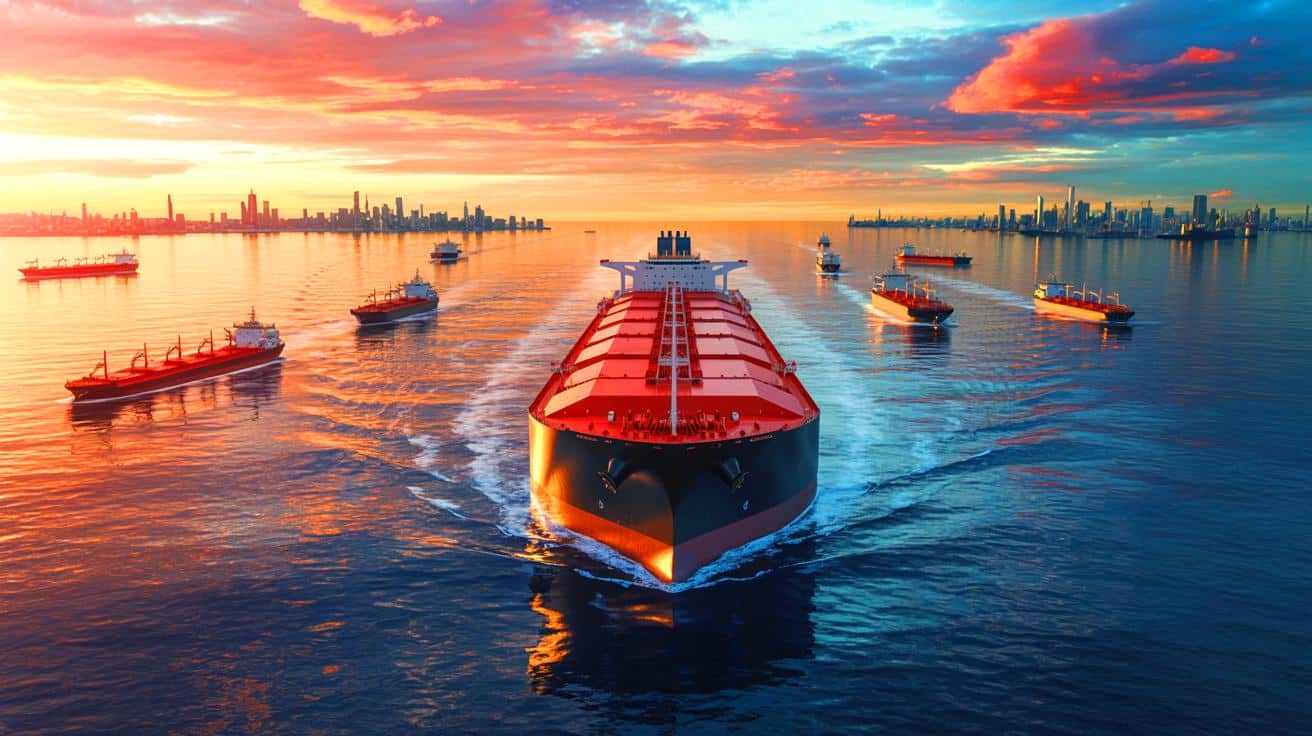IN A NUTSHELL
🌍 U.S. LNG exporters aim to expand market reach as European demand declines and competition intensifies.
🚢 Longer shipping routes to Asia increase transit costs, challenging the profitability of U.S. LNG exports.
🤝 Strained trade ties may occur as U.S. exporters compete with Qatar and others in Asian markets.
📈 The future of U.S. LNG dominance hinges on adapting strategies amid shifting global energy dynamics.
As the United States solidifies its position as a global leader in liquefied natural gas (LNG) exports, the landscape of international energy trade is undergoing significant shifts. While American LNG vendors have enjoyed robust sales to Europe, recent trends suggest that this Euro-centric focus may not be sustainable in the long term. With European nations increasingly turning to renewable energy sources and reducing their dependency on fossil fuels, U.S. exporters face the dual challenge of finding new markets and competing with established players like Qatar and Australia. The coming years will test the adaptability and strategic foresight of the U.S. LNG industry as it navigates these changing dynamics.
Challenges of a Euro-Centric Strategy
Europe has been a cornerstone of the U.S. LNG export market, accounting for two-thirds of American shipments in 2025. This reliance on Europe began in earnest following the geopolitical upheaval of Russia’s invasion of Ukraine, which prompted European countries to seek alternatives to Russian gas. However, this heavy focus on Europe now poses risks. As the continent accelerates its transition to renewable energy and enhances energy efficiency, its LNG demand is predicted to decline. The International Energy Agency forecasts a 10% reduction in European Union gas demand by 2035.
U.S. exporters must therefore reassess their strategies to maintain growth. Current trends indicate that the European market will not provide the same level of demand in the future. The shift towards renewables is a logical step for Europe in its quest for energy independence and sustainability, but it leaves American LNG vendors at a crossroads. The question remains: can U.S. exporters find equally lucrative markets elsewhere?
Exploring New Markets Amidst Stiff Competition
As European demand wanes, U.S. LNG exporters are eyeing Asia, the world’s largest LNG importing region. However, penetrating this market is fraught with challenges. Qatar and Australia already dominate Asian LNG imports, bolstered by shorter shipping routes to key consumers like Japan, China, and India. In contrast, U.S. shipments must travel longer distances, incurring higher transit costs and longer delivery times. For example, a journey from Sabine Pass, Louisiana, to India takes more than 30 days, doubling the trip time compared to European destinations and increasing costs.
To compete, U.S. exporters must offer more attractive pricing, which could further erode profit margins. Currently, only 8% of U.S. LNG reaches the top five Asian importers, highlighting the uphill battle American vendors face. The necessity to lower prices while managing rising transit expenses poses a significant financial challenge, potentially impacting the creditworthiness of those in the industry.
Potential Trade Tensions and Geopolitical Implications
The U.S. push into Asian markets may also stir geopolitical tensions. Qatar, for instance, heavily relies on LNG exports for national revenue and has plans to expand its export volumes. Aggressive U.S. maneuvers to capture Asian market share could disrupt these plans and strain diplomatic relations. Moreover, Qatar’s commitment to invest in U.S. LNG facilities may be jeopardized if American expansion efforts threaten its market position.
Other countries like Canada, Russia, and Mozambique are also gearing up to increase their LNG exports, intensifying the competition the U.S. faces in securing new markets.
This crowded field means that U.S. exporters are not only competing with existing players but also with emerging ones that are eager to claim their slice of the pie. The strategic choices made by U.S. LNG companies in navigating these relationships will have far-reaching consequences for the global energy trade landscape.
Economic Considerations and Future Prospects
In light of these challenges, U.S. LNG exporters must carefully evaluate their economic strategies. The financial viability of expanding into new markets hinges on balancing competitive pricing with profitability. The increased cost of shipping to distant regions and the necessity to offer competitive prices are significant hurdles. Moreover, selling to markets with less robust credit profiles than Europe adds an element of financial risk.
Region
U.S. Market Share (%)
Comparison to Other Exporters
Top 5 LNG Importers
8%
Low compared to Qatar and Australia
Next 5 Largest Importers
44%
Higher market share
Despite these challenges, the potential rewards of successfully tapping into Asian markets are substantial. However, U.S. exporters must remain nimble and innovative in their approach, leveraging technological advancements and strategic partnerships to enhance competitiveness. The future of U.S. LNG dominance will depend on how effectively the industry can adapt to these shifting global dynamics. Will American LNG vendors rise to the occasion and secure their place in an increasingly competitive global market?
This article is based on verified sources and supported by editorial technologies.
Did you like it? 4.5/5 (25)
